Is Oslo even a real city? It’s more than just a fjord.
Norwegians have a saying, “Det finnes ikke dårlig vær, bare dårlig klær!” which translates to “There is no bad weather, only bad clothes!”
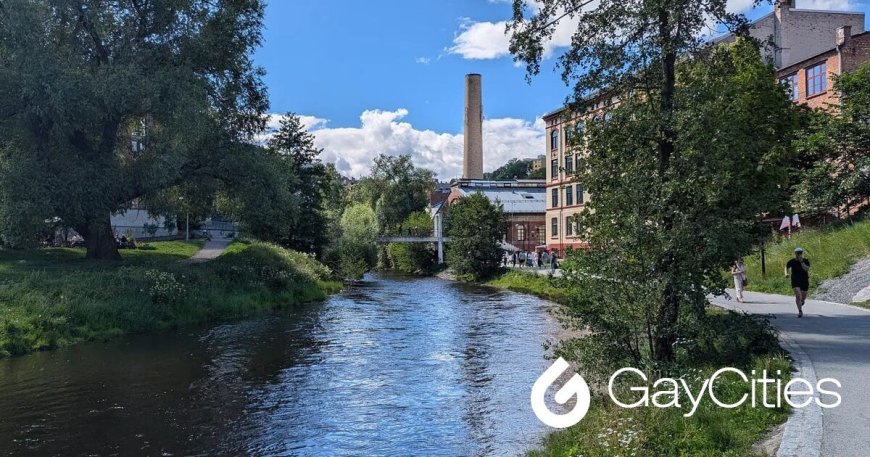
This is a regular feature about where we currently are in the world: how we ended up there, what it costs, and exactly what we think. Subscribe to our free travel newsletter here.
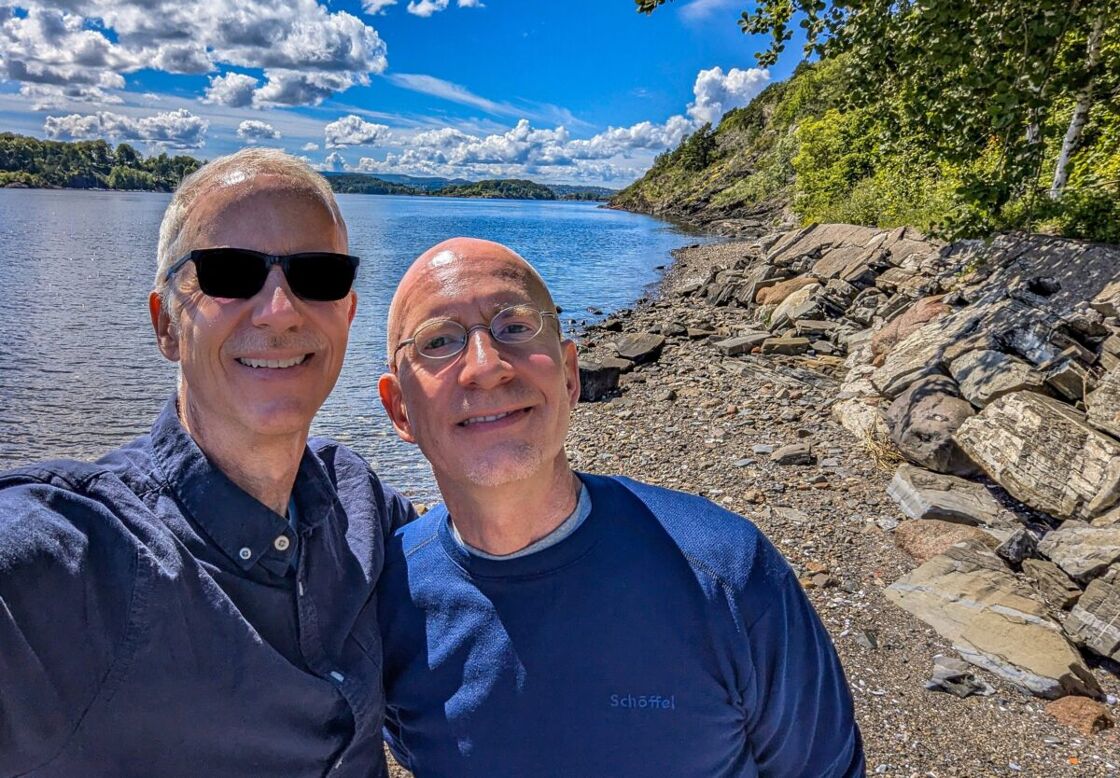
Brent and I are currently spending four weeks in Oslo, Norway. 93 percent of Norwegians live in the southern part of their country, which is warmer than the north. 27 percent live in just the Oslo area.
Pack your bags, we’re going on an adventure
Subscribe to our weekly newsletter for the best LGBTQ+ travel guides, stories, and more.
Subscribe to our Newsletter today
The city’s population is 709,037, with a “greater urban area” of 1.5 million. Technically, residents of Oslo are called “Oslovians” or “Osloites,” but almost no one says this. Instead, they’re “Norwegians.”
And yes, Oslo sits at the end of one of Norway’s famous fjords — those deep, narrow sea inlets. The country has almost 2000 fjords in all.

Norway is both a Scandinavian country and a Nordic country. What’s the difference?
Norway, Sweden, and Denmark are considered “Scandinavian” because they share a common history, culture, and root language.
But neighboring Finland and Iceland have different languages — and different histories and cultures — so they, along with Norway, Sweden, and Denmark, all make up the “Nordic countries” — from the French word “nordique,” meaning “of the north.”
Here are a few other fun facts about Oslo and Norway:
- While Norway is one of the most robust democracies in the world, its correct name is the Kingdom of Norway. Yup, Norway still has a king, and the royal family is one of the most popular in the world, with national support of some 72%. Perhaps that’s because the Norwegian monarchy is also one of the “poorest” in the world, worth a total of only $30 million USD.
- Oslo was founded in 1040 AD by, yes, the Vikings. After it burned down in 1624, King Christian IV rebuilt and named it after himself: Christiania — later Kristiania. It wasn’t until 1925 that the city returned to its original Norse name, Oslo.
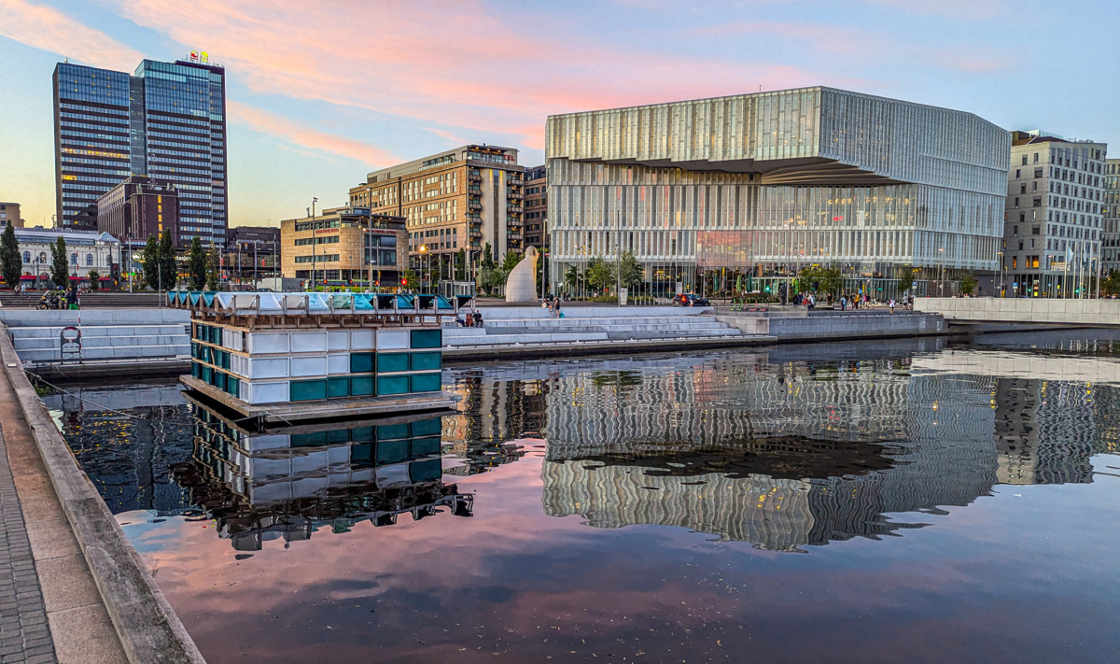
- English is an unofficial second language in Norway, with about 90% of Norwegians having at least a moderate level of fluency.
- Norway isn’t in the European Union, but it is in the “common borders” area known as the Schengen Zone, which limits how long non-EU tourists like us can stay anywhere in the entire Schengen area to 90 days in any 180-day period.
- Norwegians are responsible for the existence of salmon sushi. The Japanese — who, of course, first created sushi — thought eating raw salmon sushi was unsafe and disgusting. But in the 1980s, the Norwegians, who had more salmon than they knew what to do with, managed to convince Japan otherwise.
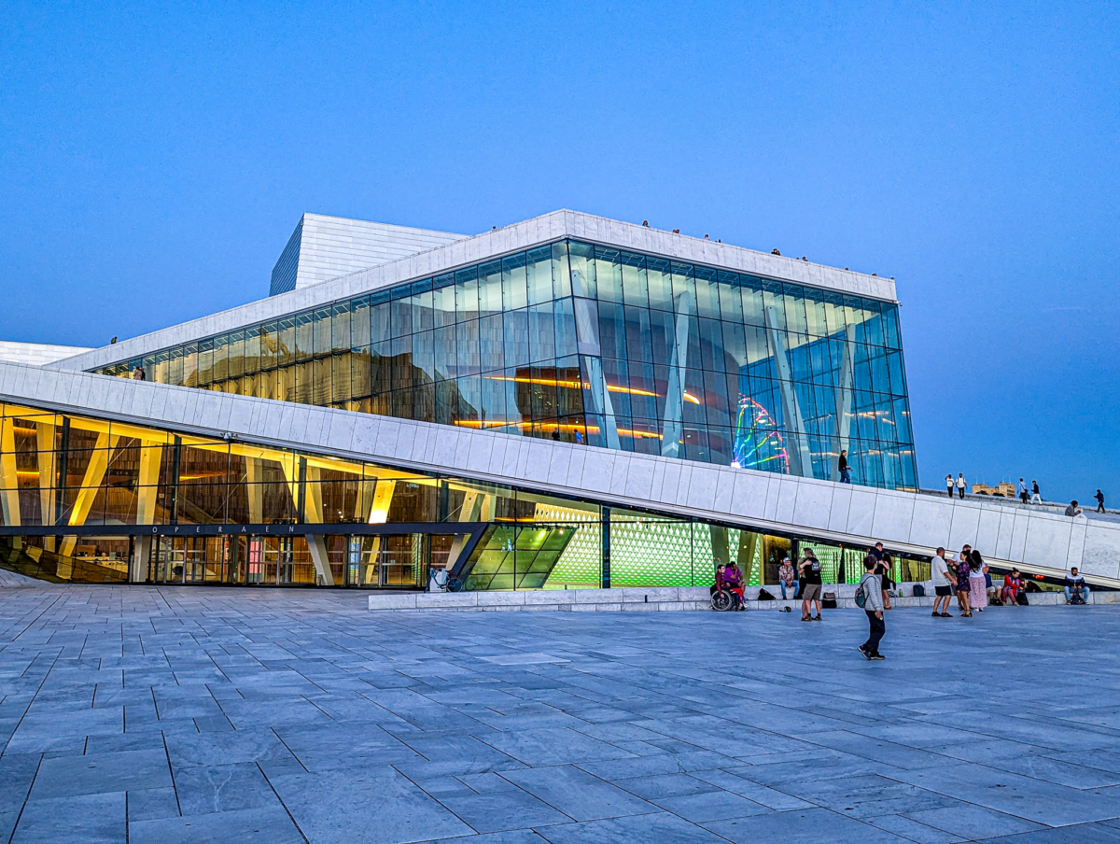
How did we end up here?
Brent and I have long wanted to visit the Nordic Scandinavian insanely cold countries in Northern Europe.
But we also have a good former-nomad friend, Marianne, who is Norwegian. Since we’re spending this year in Europe, we decided this was the time to visit her in Oslo.
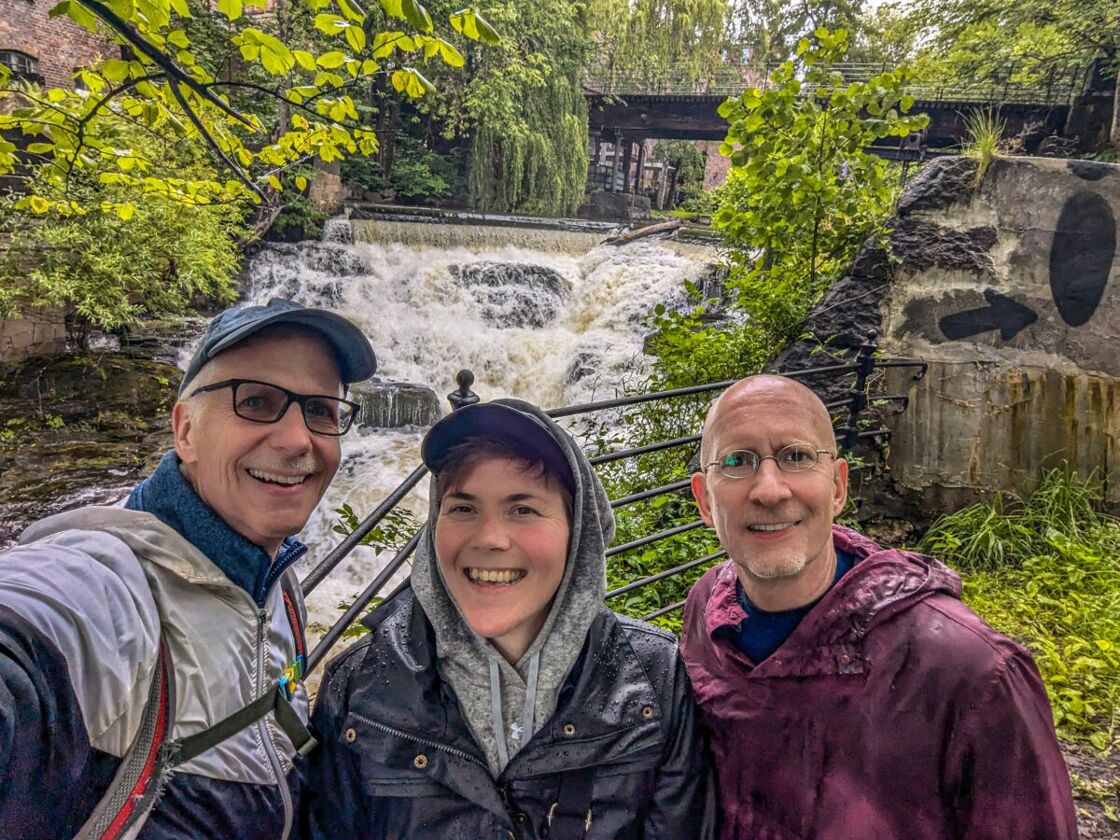
Everyone has asked us: “Where else are you going in Norway?”
When we respond, “Nowhere, just Oslo,” people’s eyes bulge.
They say, “But what about the other fjords? And mountains? Are you crazy?”
We are kind of crazy, but we’re also “slomads” — slow travelers. We’re also still working, not retired or on holiday. And, of course, we’re visiting Marianne.
We want to stay another few months and travel around, but because of the aforementioned Schengen Zone, we have no more tourist time in Western Europe.
Fortunately, there is a ton to do in and around the city.
But one day, we’ll definitely be back to explore the rest of Norway.
Related
Should you move to Europe? Or just visit for extended stays?
We were frustrated by America, so we left. What are the pros and cons of your doing it too?
Where are we staying? What does it cost?
We’re staying in Majorstuen, an upscale neighborhood just outside the city center, on a major metro line and various tram lines. Marianne strongly recommended it.
We originally booked what looked like a great Airbnb unit: beautiful and very spacious. It was $2900 for 28 days, or $104/night, which seemed reasonable for the neighborhood and city, not to mention the size and quality of the unit.
Then a month ago, they canceled on us.
Panic ensued. After all, our stay was right at the start of the Oslo high season. Could we find something decent that didn’t break the bank?
In the end, we found something next door to our old unit, and it was cheaper: $2100 for 28 days or $75/night.
(Pro tip: On most online rental platforms, many units have “weekly” or “monthly” discounts, and even if you’re not staying the full week or month, the per-night rate can still be cheaper. We can only stay in Oslo for 26 days, but by paying the “monthly,” 28-day rate, we saved 43%, or $1400.)
Our current unit is in the same great location and has a truly fantastic host, but it’s smaller and darker than the other.
It also has a tiny bedroom. The bed fills the entire room, meaning one person has to crawl over the other to get out of bed. Meanwhile, the bunk bed is really only meant for a child.
These things happen. And hey, we did save $800.
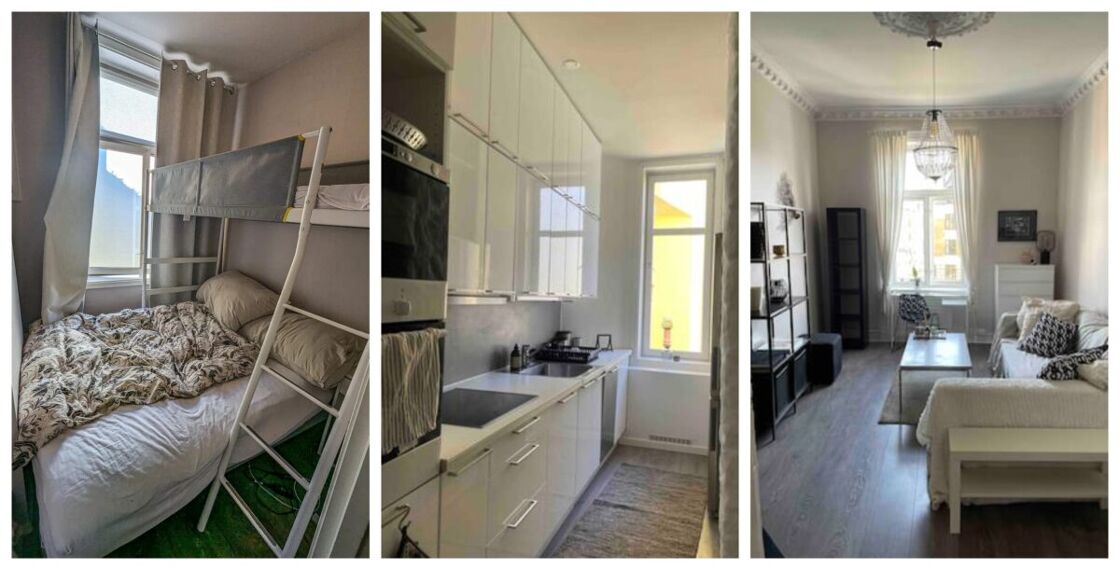
Majorstuen is as great as Marianne said. We’re a ten-minute walk from Frogner Park, the largest in the city. With the great public transportation, we can be downtown in fifteen minutes — thirty minutes if we walk.
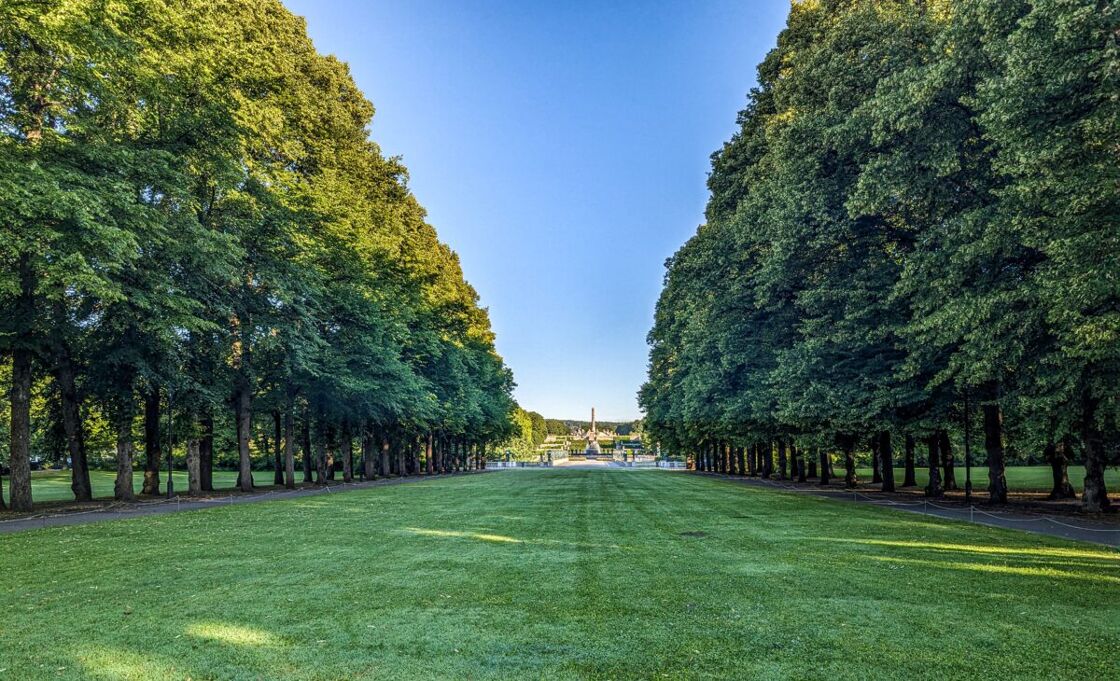
There are also plenty of shops, grocery stores, and restaurants.
If you’d like to be closer to downtown, neighborhoods worth considering include hip Grünerløkka, as well as Bjørvika and Sørenga, which sit along the Oslo Fjord, or Sentrum, Oslo’s downtown core.
What have we been doing?
We just got off a two-week Mediterranean cruise, during which we didn’t work at all, so here in Oslo, we’ve been fairly busy at our laptops.
But we’ve also hung out with Marianne, gone to Oslo Pride with her, and met her friends and parents.
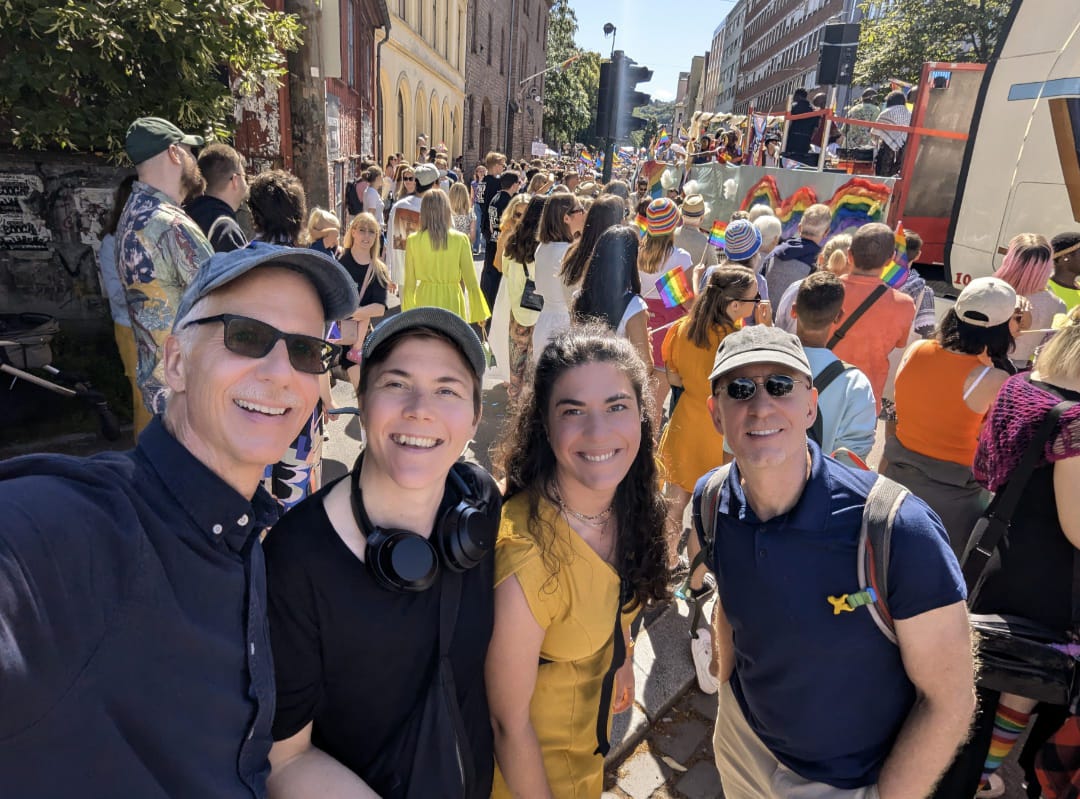
There’s been a fair bit of rain and some completely gray days. As I write this, it’s pouring buckets outside.
There’s been some sun, and we did have one afternoon where it hit 28 C/82 F. But Marianne tells us that the local news is saying this is one of Oslo’s worst summers in quite a while.
Nonetheless, we’ve been getting out. One wet Saturday, the three of us walked eight kilometers along the Akerselva River, which runs right through town. There used to be a lot of industry along the river, but now there’s a lovely pedestrian path past old factories turned into apartments, cafes, and student housing. Plus, there’s plenty of green spaces.
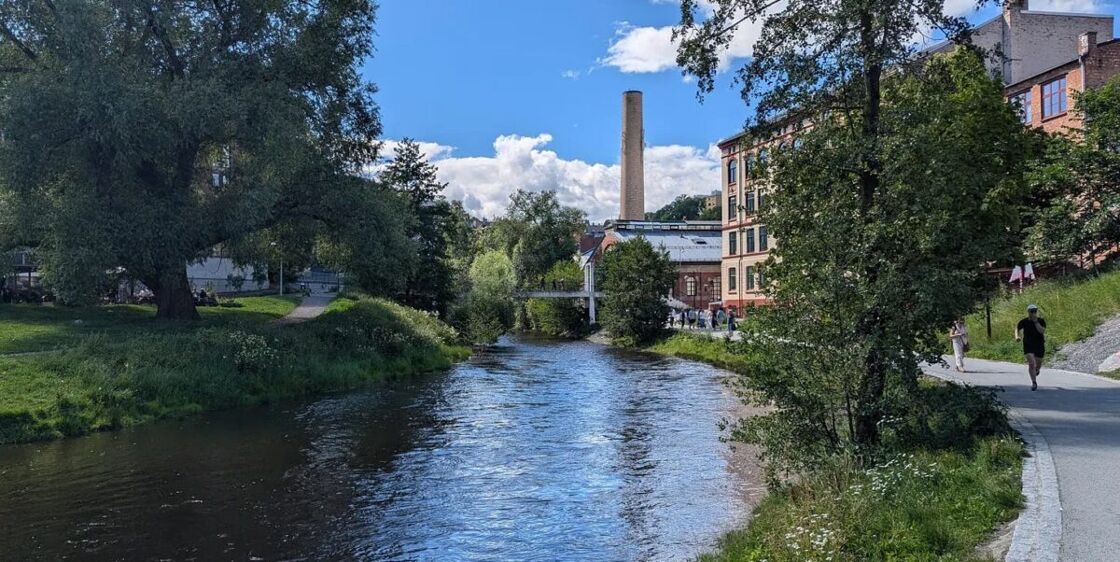
Speaking of green spaces, Oslo is stupid with them. 74 percent of the city area is green space, and 95% of the city residents live within 300 meters of a park or green space.
Here are some of the other things we’ve done:
- We took the ferry to Hovedøya, one of six charming islands served by the ferries from downtown Oslo. The islands are mostly forests, public parks, and beaches, and automobiles are not allowed.
- We’ve repeatedly visited the locally famous Vigeland Sculpture Park, right near our apartment, in Frogner Park. (And I might have taken
hundredsthousands of pictures.)

- We’ve explored downtown Oslo, visiting the Opera House, the Munch Museum (home to the famous painting The Scream by Edvard Munch), the downtown library, the Oslo Cathedral, and Akershus Fortress. We also visited the Royal Palace but weren’t impressed enough by its exterior to go inside.
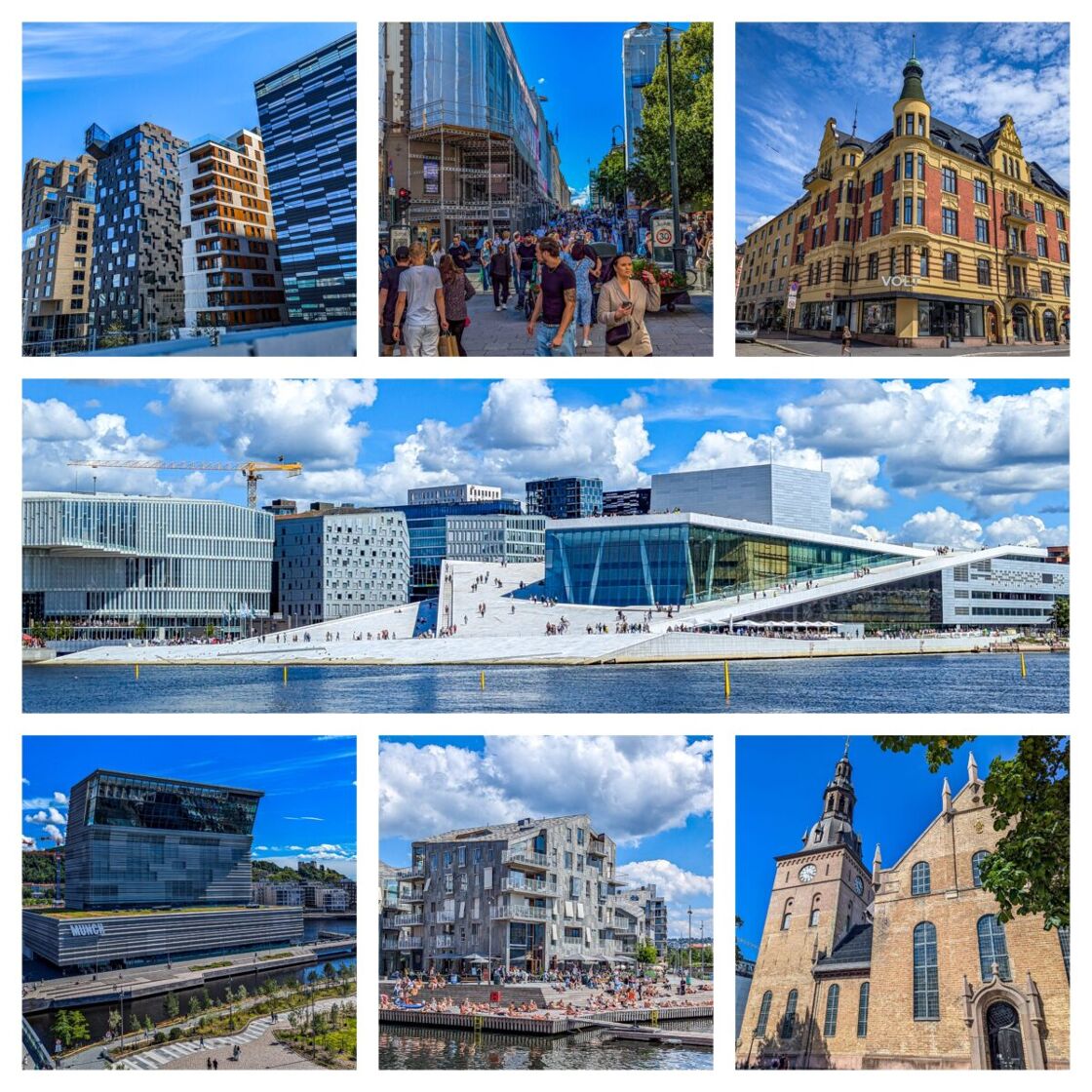
- We’ve planned to do some of the great hikes easily accessible from Oslo (often right off train lines), but unfortunately, the weather has always sucked. Norwegians have a saying, “Det finnes ikke dårlig vær, bare dårlig klær!” — which translates to “There is no bad weather, only bad clothes!” Unfortunately, we have only bad clothes for this kind of weather.
- Upcoming activities include the Holmenkollen Ski Museum & Tower, where you can see thousand-year-old skis, and the Norwegian Museum of Cultural History, an open-air museum.
- We really wanted to see the famous Viking Ship Museum, but it’s currently closed until 2027.
- We also want to do one of the “floating saunas,” which go out into the Oslo Fjord, but we’re rapidly running out of time.
What do we think?
In many ways, Oslo is a dream city. It’s stunningly beautiful and big enough to have lots to do, but small enough that it’s never overwhelming. English is widely spoken, and Norwegians are sophisticated yet pleasant and easy-going.
Downtown Oslo is virtually car-free, but thanks to public transportation, it’s a snap to get almost anywhere — even far outside the central area.

Norway is ranked as the third safest country in the world. There are no “unsafe” neighborhoods in Oslo.
It’s a great city in a great country.
The downside is, of course, the weather. The winters are dark and brutal. And as we’re finding out firsthand, you can’t even count on having a nice summer.
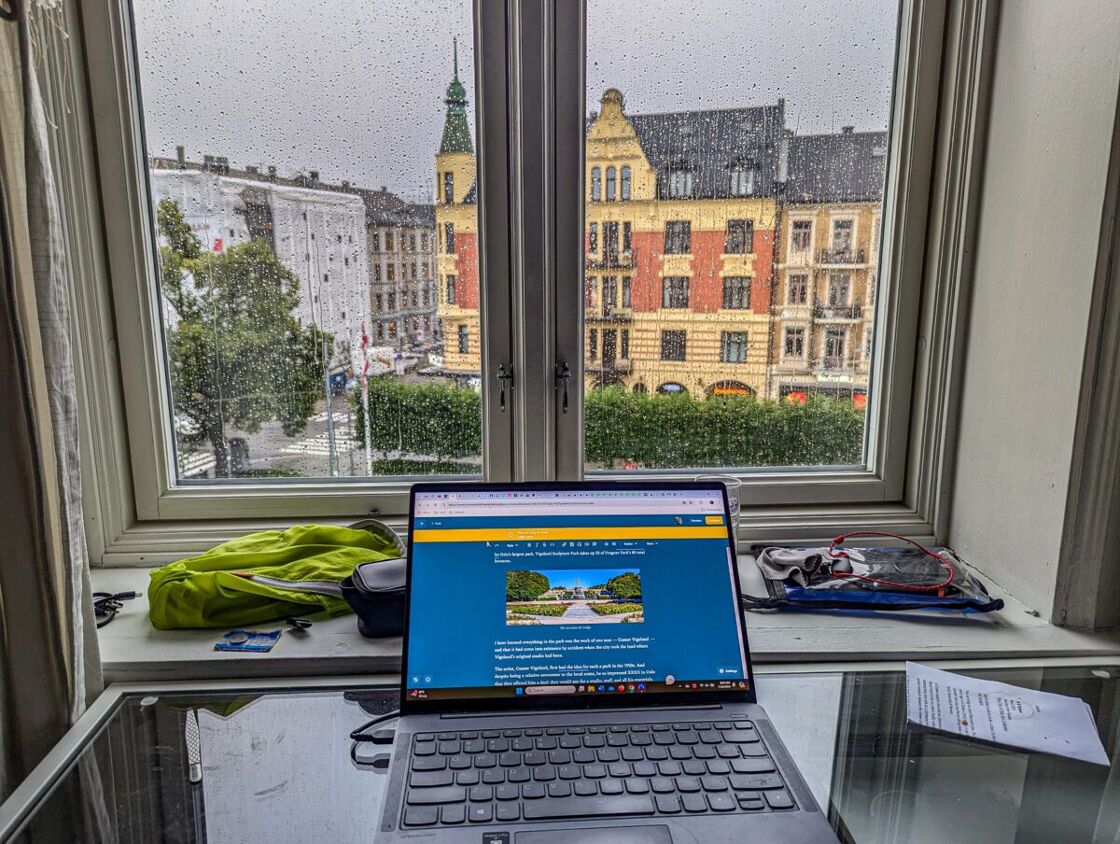
Oslo is also the most expensive city in an expensive country. Here’s a good breakdown of prices.
Eating out here is especially expensive. When I asked our Airbnb host for suggestions, she said, “I don’t eat out much since it’s often so expensive!” But another local told us, “There are definitely cheaper places to eat — you just need to know where to go.”
For takeaway, we’ve paid $18 for a single chicken shawarma or a medium-sized burrito, and Domino’s two-medium-pizzas-with-two-toppings special is $30. A sandwich or burger has run about $25 at sit-down restaurants, and it’s been difficult to find an entree for much less than $30.
But as in most of Europe, there is no tipping, and taxes are included in the posted prices.
All this said, I read a great comment about Norway’s affordability:
The things everyone needs — healthcare, education, social services, public infrastructure, housing — are affordable. Things people want — eating out, alcohol, big screen TVs, cars — are much more expensive.
And, of course, Norwegians — like most Nordic residents — are among the happiest people in the world.
Would we settle down here?
Everywhere we live, Brent and I ask each other: “Could this be the place we eventually settle down?”
Brent says, “OMG, yes! Absolutely! It’s frickin’ paradise on Earth!”
But there’s simply no way I could deal with the cold, dark Norwegian winters. We left rainy Seattle partly because I couldn’t handle that weather anymore. I could never make it through a winter here.
Oslo travel tips
- Norway’s currency is the Norwegian krone — not the euro, as in most of Western Europe. As of July 2024, one krone equals $.093, so ten kroner is almost a dollar. The country is also virtually cashless. I didn’t see a single cash transaction during our month in Oslo. Credit and debit cards rule here.
- Taxis and Ubers are really expensive, but public transit is easy and goes almost everywhere. From the airport, you’re certainly better off taking a train into town and then catching the metro or a tram wherever you need to go. From the airport, there are two options: the express train, Flytoget, which costs $24, or the Vy Regional train, which only takes a few minutes longer and costs about half as much. There are ticket kiosks near the airport’s metro stop. A tram stopped right outside of our flat.
- Apart from the airport, the rest of Oslo’s public transit system does not use tickets; stations do not have ticket booths or machines. Instead, you have to download the Ruter app and buy tickets online; you can also buy a card at certain “information points,” which must then be validated at little machines for each trip. Remember to buy your online ticket before entering the platform area, or an inspector can give you a fine. A single ride, good for an hour, costs $4.20. However, if you board a train or ferry before your hour ends, you can ride to your destination without buying another ticket.
- The best local grocery options are REMA 1000 or Extra, both in price and selection. KIWI is another option, but I found the selection lacking. Meny is a more upscale market. Grocery stores are closed on Sunday, but small convenience stores called Joker are open.
- The 24-hour Oslo Pass is $52 and gives you admission to various museums and public transportation.
- If you need quick but not urgent medical treatment, DrDropin clinics are found all over the city. But you must book online. An in-person visit costs $70, and a video visit is $37.
- Tap water is drinkable in Norway and tastes fantastic.
- Many public restrooms require payment but only take payment by card. The cost is usually one or two dollars.
If you can afford it, we highly recommend you visit Oslo! We also think this hilarious ad that recently went viral is pretty accurate:

 Mark
Mark 





